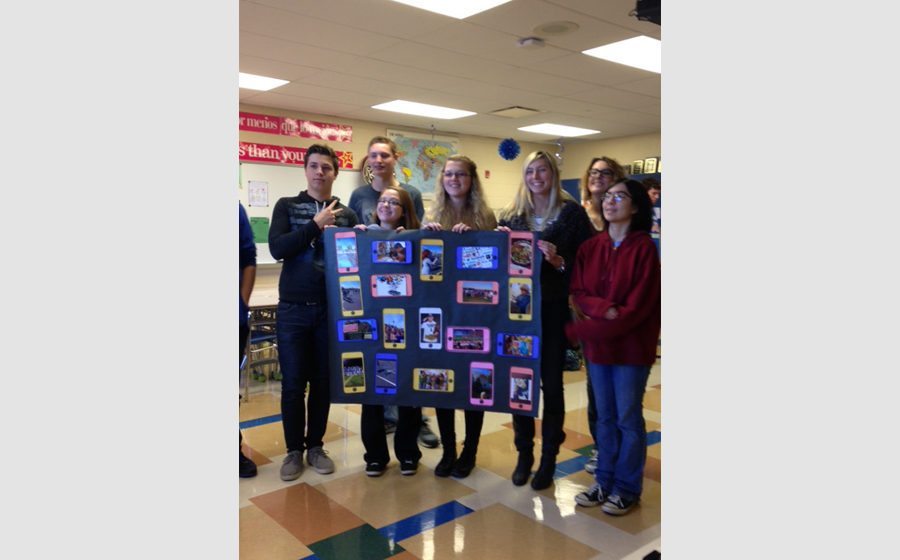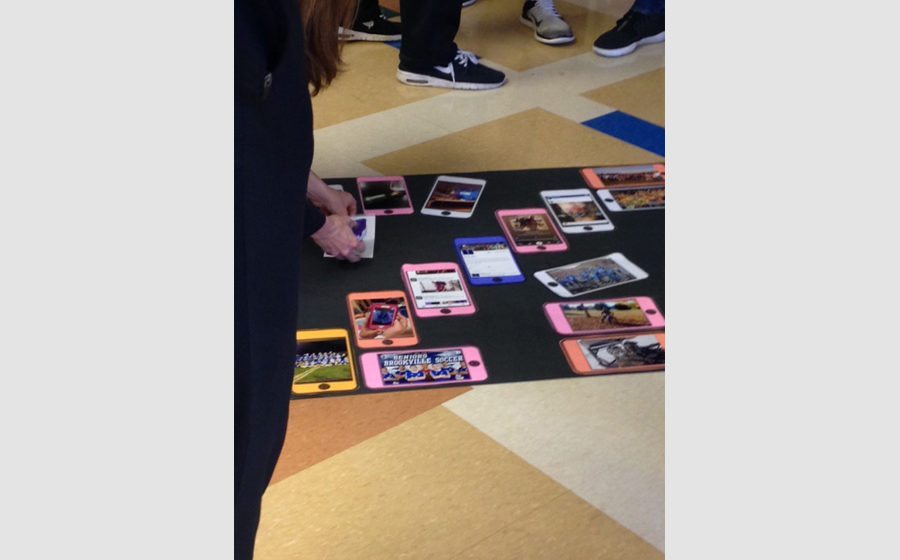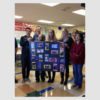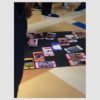Who Are We?
Developed by Paula Hutsell
Brookville High School, Brookville
Spanish
Grade Levels: 11-12
Introduction
Finding one’s identity is an important pursuit during the high school years. It seems to come easily to some and is more difficult for others, but it is a quest for everyone during that time in their lives. This lesson not only focuses on that journey, but asks students to do so in another language, namely Spanish, using multi-media used by students in their everyday lives today. The young people in Ms. Hutsell’s classes are asked to examine an authentic piece of art and the message of the artist, through their own photographs and to present their opinions all in Spanish!
This lesson provides a sequence of activities that can be used in other classrooms by teachers who wish to present a multilayered lesson that reflects real life learning. All or parts of this lesson may inspire other instructors to produce their own multidimensional lessons.


Student Performance Tasks
- Class will develop the rules that will be followed during class.
- Class will collaborate through brainstorming. The theme, mood and message of the collage.
- Students will improve photography skills, and take or find appropriate pictures for the collage.
- Students will work in groups to create and then present their collage.
Non-Arts Discipline
Spanish 3 & 4
Content Statement
Enduring Understandings
Critical and Creative Thinking, Literacy
Progress Points
- Convey meaning using writing processes and presentation strategies.
- Plan a range of texts and presentations by brainstorming ideas and choosing vocabulary, phrases and sentence patterns.
- Organize thoughts and choose resources.
- Produce initial drafts/presentations while keeping audience, context and purpose in mind.
- Revise and edit texts/presentations using tools that promote reflection on meaning, form and mechanics.
- Produce final drafts/presentations with aesthetic appeal using tools that help to convey meaning.
- Rehearse presentations using a range of delivery strategies.
- Use appropriate techniques to cite sources and avoid plagiarism
Strand/Process
PRESENTATIONAL COMMUNICATION: Communicate in languages other than English, both in person and via technology. Learners present information, concepts, ideas and viewpoints on a variety of topics to audiences of listeners, readers or viewers for varied purposes. Learners demonstrate linguistic and cultural competence through academic endeavors, creative undertakings and artistic expression. Learners use their understanding of culture to convey messages in a manner that facilitates interpretation by others where no direct opportunity for the active negotiation of meaning exists.
Arts Discipline
Visual Arts
Content Statement
Enduring Understandings
Critical and Creative Thinking, Literacy
Progress Points
- Understand and articulate the Intrinsic worth and public value of arts and cultural participation.
- Draw on a variety of sources to generate, select and evaluate ideas to create personally meaningful products.
- Apply reasoning skills to communicate key ideas expressed in their artworks and the works of others and use appropriate criteria and language to critique the works.
Strand/Process
Perceiving/Knowing & Responding/Reflecting
Essential Questions
Who are we?
Content Elaborations
Students will learn how:
- To discuss a piece of artwork.
- To identify universal themes in works of art.
- To identify the tone of a piece of work and how that tone influences the viewer.
Expectations for Learning
Students will demonstrate this learning by:
- Writing about authentic works of art and photographs.
- Presenting their opinions through interpersonal and presentational communication.
Instructional Strategies
Students will be engaged and supported in learning by:
- Devised Theatre – Connecting content Theatrically. Lucinda McDermott
- Guidelines for giving and receiving group feedback on Art, Lucinda McDermott
- Improve games. Black Box Improv. Justin Howard
- Improve activities. Edutopia
- Creating a Classroom of Laughter
- How to take better photos, PowerPoint – Katie Kerry
Assessment (Pre and/or Post)
Students will know how well they are learning by:
- Photography skills will be documented through a digital portfolio app, Seesaw
- Pre-Test: analyze a photo or painting displayed in the room
- Post-Test: analyze a photo or painting posted online in digital portfolio. Present the work to the class.
Create and present a collage that:
- Answers the essential question, Who are we?
- Displays the theme personal and public Identities.
- Makes viewers feel proud.
- Makes views think that students are unique
Materials & Resources
Materials list for Teachers:
- Access to internet
- Large paper for mounting collage
- LCD Projector
- PowerPoint: Photography
- Access to YouTube
- Free Seesaw account
Materials list for Students:
- Access to internet
- Ability to take and upload pictures
- Free Seesaw account
Key Vocabulary
Theme
landscape
portrait
scene of daily life
historical religious mythological scene
still life
Light
direct / indirect light
shadow / reflection
contrast
Color
bright / dim colors
light / dark colors
Perspective
the foreground / background
Vanishing Point
Composition
the focus
division of space
the vertical-horizontal-diagonal line
geometric shapes circle, rectangle, triangle, etc.
Meaning
the tone
the symbolism
allegory
interpretation
Career Connections
- Photography
- Advertising
Diverse Learners
Students that do not have a smartphone will be provided an iPad and a camera.
All quizzes and work may be resubmitted for full credit.
Tutoring is available after school.
Interdisciplinary Connections
Artistic Thinking Connection
Divergent and Convergent thinking:
– Brainstorming techniques were used to:
- generate and narrow down class rules
- determine what it means to lead and to follow
- what aspects were to be used to represent ourselves through photography
– Convergent thinking was used to
- narrow photos
- place photos onto collage
Technology Connections
Digital portfoliosHome/At Work Connections
Students will gather photos
Students will study vocabulary
Students will prepare to present a picture from the collage

